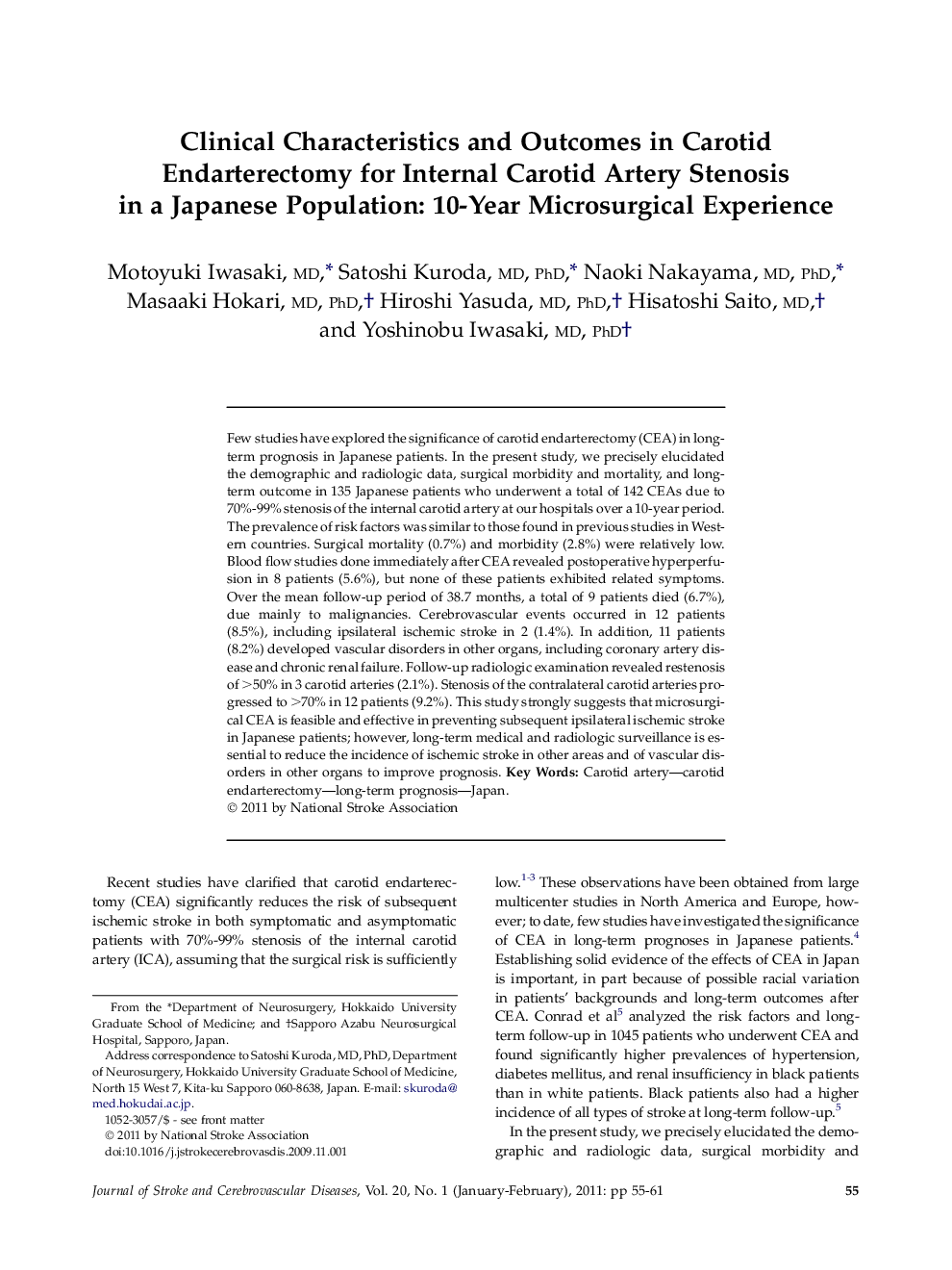| Article ID | Journal | Published Year | Pages | File Type |
|---|---|---|---|---|
| 2707192 | Journal of Stroke and Cerebrovascular Diseases | 2011 | 7 Pages |
Few studies have explored the significance of carotid endarterectomy (CEA) in long-term prognosis in Japanese patients. In the present study, we precisely elucidated the demographic and radiologic data, surgical morbidity and mortality, and long-term outcome in 135 Japanese patients who underwent a total of 142 CEAs due to 70%-99% stenosis of the internal carotid artery at our hospitals over a 10-year period. The prevalence of risk factors was similar to those found in previous studies in Western countries. Surgical mortality (0.7%) and morbidity (2.8%) were relatively low. Blood flow studies done immediately after CEA revealed postoperative hyperperfusion in 8 patients (5.6%), but none of these patients exhibited related symptoms. Over the mean follow-up period of 38.7 months, a total of 9 patients died (6.7%), due mainly to malignancies. Cerebrovascular events occurred in 12 patients (8.5%), including ipsilateral ischemic stroke in 2 (1.4%). In addition, 11 patients (8.2%) developed vascular disorders in other organs, including coronary artery disease and chronic renal failure. Follow-up radiologic examination revealed restenosis of >50% in 3 carotid arteries (2.1%). Stenosis of the contralateral carotid arteries progressed to >70% in 12 patients (9.2%). This study strongly suggests that microsurgical CEA is feasible and effective in preventing subsequent ipsilateral ischemic stroke in Japanese patients; however, long-term medical and radiologic surveillance is essential to reduce the incidence of ischemic stroke in other areas and of vascular disorders in other organs to improve prognosis.
